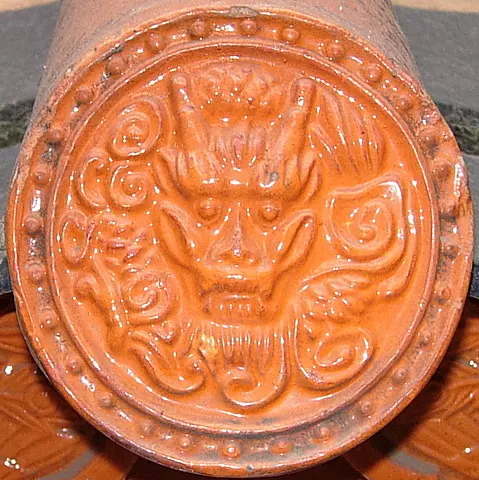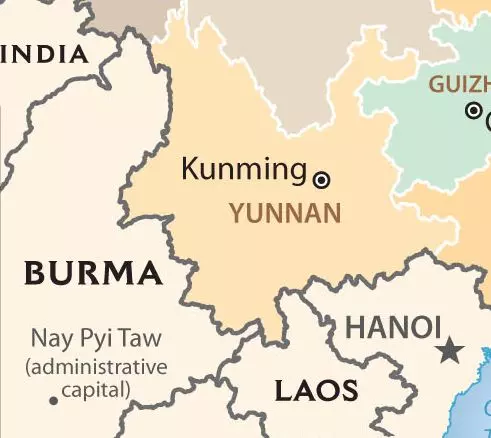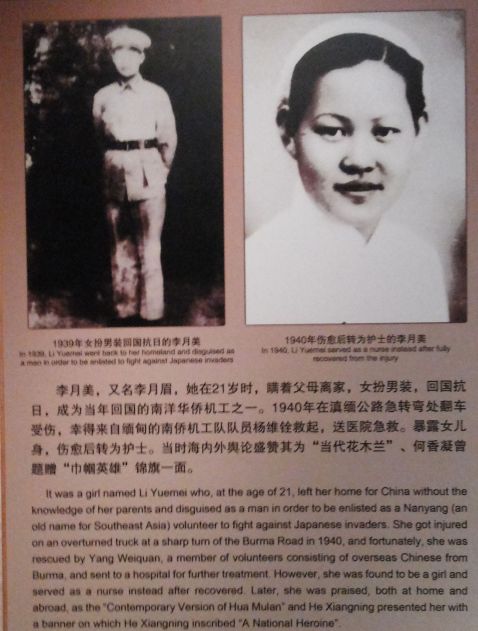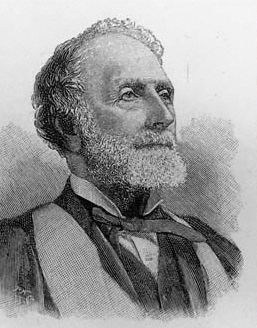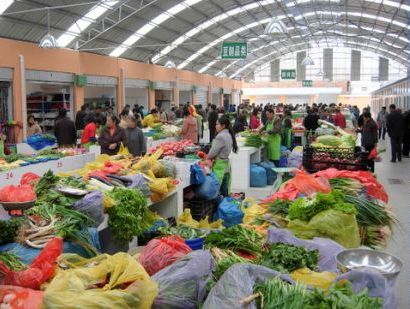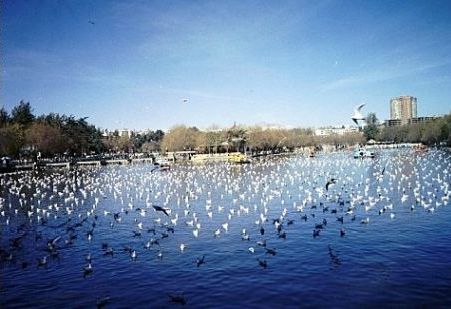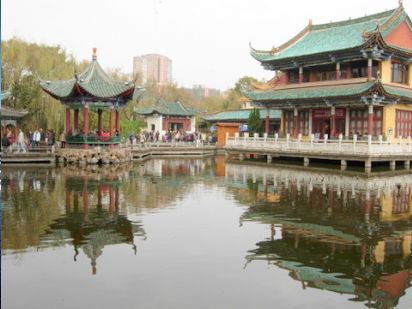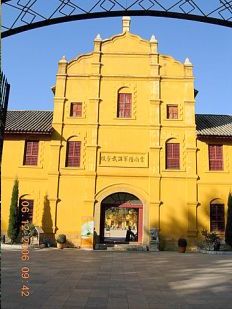Green Lake: Reflections from the Surface of China
Random Footnotes
Not documentation, but illumination of or expansion upon, randomly, various items. Episodically and unpredictably, but perhaps interestingly. A place also for corrections/comments. Contact info in Addendum.
This book alternates between chapters recounting the experience of living in China during years of very rapid development and chapters based on reading about China and its history. It ends before the covid pandemic began. For a while, a truly remarkable East-West contrast appeared. Although the pandemic began in Wuhan, China had, a year and a half later, only about 90,000 reported cases and about 4,600 deaths. Europe, the US, Brazil and Mexico -- together they have as many people as China. Together they had 85m cases and 2m deaths. In other words, according to these figures, China had less that 1% of the cases and deaths which had occurred in this block of western nations. Yunnan province, 46m people, had, again according to these figures, 351 cases and 2 deaths. California, 39m, had 3.6m cases, 57k deaths. One person who read these figures and was especially angry about not only this but many other points which result from comparison between China and the US, in particular, was Bill Maher (March 2021): Losing to China. But see also Numbers.
1/ Around the Lake
Auguste François. Magnificently moustached French consul in China 1896-1904, including years in Kunming. One gets the impression Swagger was his best friend. Trained as a lawyer, he worked first for France's Ministry of Internal Affairs, then External Affairs, which took him to China. While in Kunming he obtained a concession from the government which resulted in France building a rail line from Vietnam to Kunming. He was also an explorer and photographer, even taking videos at one point. One source says: "His photography is the earliest, largest and most extensive and complete collection of photographs documenting Chinese society at the end of the Qing Dynasty." Another source says Auguste was the originator of the selfie. A society dedicated to him was formed in 1990: Auguste.


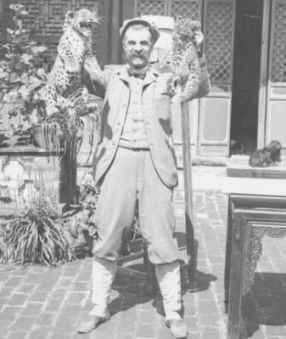
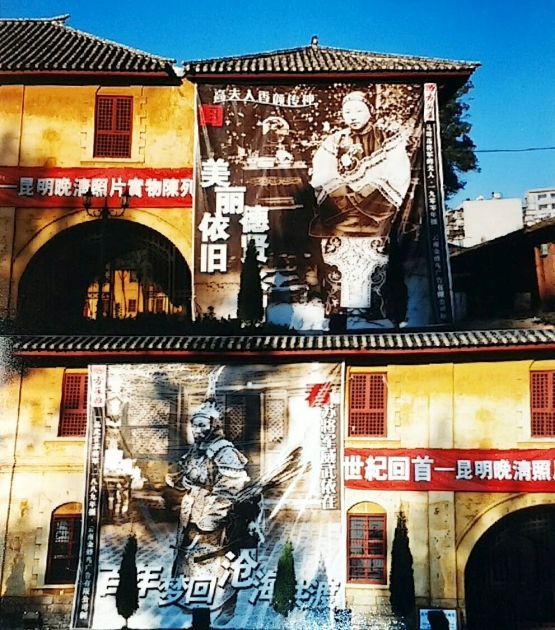
qigong: "coordinated body posture and movement, breathing, and meditation used for the purposes of health, spirituality, and martial arts training. With roots in
Chinese medicine, philosophy, and martial arts, qigong is traditionally viewed as a practice to cultivate and balance qi (chi), translated as 'life energy'."
tai chi: Originally a martial art specializing in defensive moves, it is now more often practiced with hopes of health benefits and greater longevity. Some forms specially
emphasize practicing tai chi with slow movements. The five classic styles are named after the families that originated them: Chen (the oldest), Yang, Wu Hao, Wu, and Sun.
Joggers. What a change a decade and a half can make! The lake these day is surrounded day and night by many joggers doing their lap or laps around the lake (about
1 1/3 miles).
Tengchong. More than a decade after the encounter with Jintao (Peter) recounted here, I visited Tengchong and its new war museum. The museum makes vivid the battle and the total destruction of Tengchong and neighboring Longling. The illustrations are good, as are the explanations in English . Several things struck me in particular. One
was a real-life Hua Mulan, named Li Yuemei -- sort of, at least she tried. The story is not quite clear, but I gather she was living in Burma, away from her homeland, China, when the war came. She dressed like a man, enlisted, and obtained a uniform. On her way back to China, however, "She got injured on an overturned truck at a sharp turn of the Burma Road in 1940."
She was then discovered to be female and served as a nurse for the rest of the war. Our daughter was only three when Disney's film came out, but we bought the DVD and when she was old enough to appreciate it, we watched it many times. (Mulan II is just as good; it came out in 2004 -- and a live-action adaptation appears in 2020.)
The second thing that struck a particular interest was the photo of Du Yuming. Du was close to CKS and was a successful field commander in the Burma theater of the Sino-Japanese War. In the civil war which followed, he won several important battles against Communist forces in NE China, including defeating Lin Biao twice. (CKS then replaced Du with a more favored general, who promptly
lost much of NE China). At this point, Du correctly guesses that Major General Guo Rugui, one of Chiang's most trusted staff officers, is a Communist agent. Du's main evidence, apparently, was that Guo was clean. CKS became enraged at the implication that all Nationalists were corrupt, only Communists were clean. Guo was in fact a spy! (Du's wife, incidentally, had once been a Communist herself.)
Du was later captured by the Red Army and held in prison until 1959, after which he was rewarded with a high-ranking position in the Chinese People's Political Consultative Conference, possibly in hopes his son-in-law, Yang Zhenning, a Nobel laureate in physics, would return to China. Du and Guo Rugui actually became friends -- they had a lot in common.
The SARS epidemic mentioned in this chapter was eventually quelled, but, of course, as we all know now, back in late 2019 a new -- gigantic -- virus appeared: coronavirus. Back in 2019, it slowly spread within China, and severely affected the Chinese New Year -- a time when everyone travels back to their home city to be with relatives. The entire city of Wuhan, which has 11 million people, was basically put on lock down. It is hard to imagine that happening in any other country, is it not? And measures like that have worked. Compared to the US and Europe, and many other areas, China's virus cases have been astonishingly low. Yunnan province, the home province for this book, for example, has 46m people (almost half again more than California), but as 2021 prepares to turn into 2022, it has only had two deaths! Los Angeles alone will approach 30,000 by year end -- and Los Angeles and California are bright spots in the US-Europe geographic arena! China can be amazing.
2/ Through Chinese Eyes
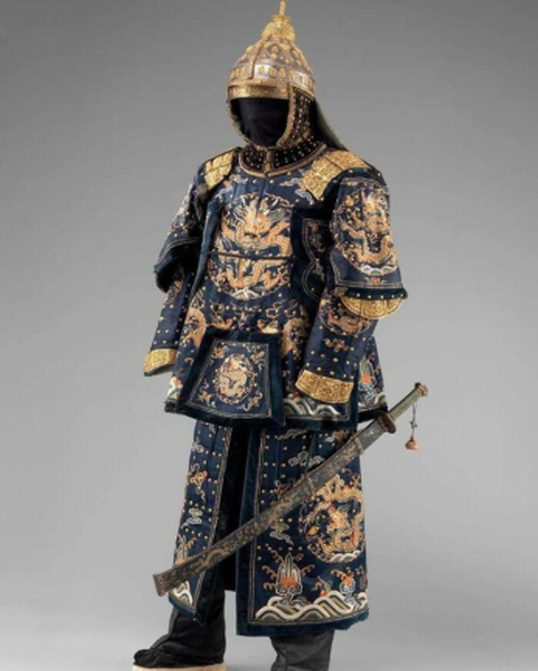
Commissoner Lin, now Lin Zexu, was born in 1785 in what is now Fuzhou, the capital of Fujian province on China's SE coast, directly opposite Taiwan. The second son of a Qing Dynasty official, he was what is sometimes called a "gifted child," one who passed the imperial examinations at a relatively early age. He favored keeping the doors to China shut to foreign powers, but he was unusual in wanting to acquire knowledge of the outside world, including in the form of gathering material for a world atlas.
This learning about foreigners continued when he was banished to the Ili-Kazakh region of remote Xinjiang province, largest and furthest west of China's provinces. He spent time observing Muslim culture. One observation was that these people were not idol worshipers but bowed and prayed to tombs decorated with poles that had hair from the tails of cows and horses attached to them (a tugh or tug). He was also interested in Kazakh stories, including one about a spirit of the lake in the form of a green goat whose appearance is a harbinger of hail or rain.
When he was rehabilitated, first as Governor-General of Shaanxi-Gansu, then as G-G of Yunnan-Guizhou, it was the beginning of a comeback which has carried on ever since, one which includes portrayal in his home country as a genuine national hero (including portrayal in three movies) and even, outside China, includes a statue in NYC's Chinatown. Even the British came to recognize his qualities. The sinologist Herbert Giles (1845-1935), second half of the famous Wade-Giles system for the Romanization of the Chinese language, said of him: "He was a fine scholar, a just and merciful official and a true patriot."
Arthur Waley: A book was published in 1972, Madly Singing in the Mountains: An Appreciation & Anthology of Arthur Waley, which all reviewers on Amazon rate as five stars. One review says: "You probably won't ever really understand how remarkable this book is unless it is raining right now and you are late to work and you take off your shoes and you start walking until you are ready to read it. There is nothing like it in all the world. But for most people, you're probably better off just going to work. With an umbrella."
3/ Transformations
The picture in the upper right corner of the main column is of Zhou Jintao (Peter), whose story is told here in various places. The picture shows him in the very first moments we made his acquaintance in Green Lake park.
Wen Yiduo. Other than the statue of him on the grounds of Yunnan Normal University, there was little to commemorate him when we first came to Kunming. Some months later we were surprised to find that a walkway behind our apartment complex had a painting of him (a reproduction of a famous photograph) on a wall at a gate into a newish primary school. Across from that was a small monument of stone tablets inscribed with information about his life.
And death -- for this was the exact spot where he was assassinated, at the entrance to his home which is where the primary school now is. About a dozen years after our discovery, the government transformed the walls of the other half of the walkway, the part that leads down to the lake, into a larger memorial to him, installing photographs of him and exerpts from his writings and poetry. But for some reason the original painting of him next to the school gate was tiled over.
Wen was born in 1899 in Hubei province, in central China. The Qing dynasty fell when he was twelve. He graduated from Tsinghua University, and then in 1922 traveled to Chicago to study fine arts and literature at the Art Institute. There he published his first poetry collection, described by one source as "a combination of anti-feudalism, patriotism and aestheticism."
He had married Gao Zhen before leaving for Chicago; his wife gave birth to a daughter, who died while he was abroad. He taught Chinese classical literature and poetry at several universities, ending up at Tsinghua, on his return, and with the rest of the faculty fled the Japanese invasion in 1937, first to Changsha, capital of Hunan province, then, largely on foot, to Kunming. "National Southwestern Associated University" was created in Kunming for scholars from Tsinghua, Peking University, and Nankai University.
His writings increasingly focused on social criticism, though a 1943 essay he wrote promoted new poetic forms. In 1944 he supported the China Democratic League, neither nationalist nor communist, but progressive and independent. He also wrote essays criticizing the corruption he saw among the Nationalists. One source says: "he didn't disagree with their politics, just their graft." But agents of the Nationalists assassinated him in July 1946, just after eulogizing his friend Li Gongpu, who had been assassinated.
The publisher's blurb for a recent volume of his poems (see below) is insightful on Wen as poet, so I take the liberty of quoting it in full: "Translated from the Chinese by Robert Hammond Dorsett, MD. Foreword by Christopher Merrill. Calligraphy by Huang Xiang. The temptation, when evaluating a poet gunned down by his government, is to start there, with the politics that led to his murder. But Wen Yiduo (1899-1946) was much too complex and heterodox to comfortably wear the martyr's robe, his works too nuanced and unsettled
o be a paragon of any revolution. His poems explore religion and rickshaws, contain the chrysanthemums of Chinese folklore and the mud of contemporary times, and dare readers to
challenge prevailing conceptions, even to render their own cynicism as hope. Mao blamed the Nationalists for Wen's death, thus elevating him to something like mythic status, yet the
poet needed no such validation. He resisted easy classification. He was a writer whose ballast was in ideas and logic, while remaining fresh to the point of innovation. In Dorsett's
interpretation, we revel in the details of Wen's work: lyric, ironic, passionate, and above all, politically aware but ideologically free. It represents a long overdue attempt to bring
international attention to one of China's preeminent 20th- century writers."
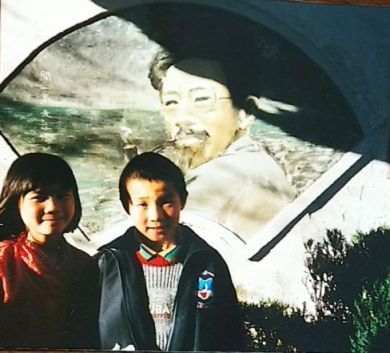
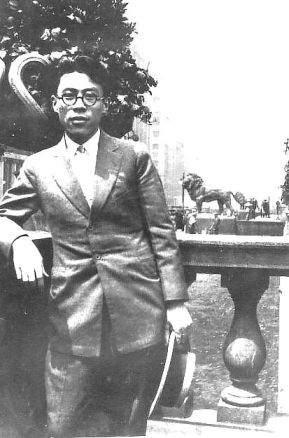
Images 1 Click
These are all images from the immediate Green Lake area or not far therefrom, dating from the early years there. The neon sign is long gone, as are the kite flyers. The trees are still painted white; there are still plenty of dancers at various places around the lake.4/ Three Explorers
As mentioned in the text, John Fairbank married Wilma Cannon, daughter of Harvard's famous professor of physiology, William Bradford Cannon (who invented the idea of the "fight or flight response"). Wilma became a historian of Chinese art. After John died, Wilma wrote and published a terrific book of her own: Liang and Lin: Partners in Exploring China's Architectural Past (1994) about a Western-educated Chinese couple they met from their earliest days in China and with whom they maintained a lifelong friendship. Lin Huiyin was China's first female architect, one who went to the University of Pennsylvania to study architecture, but who was denied the opportunity because she was a woman. She majored in Fine Arts instead. Later, at Yale, she studied stage design and took courses in architecture. Wilma describes her as "extraordinarily pretty and vivacious." She also wrote poetry in free verse, novels, and essays for various publications. She endured the Japanese invasion, residing for a time in Kunming, and the Maoist revolution. Had Puccini lived longer, he would have found her life a perfect plot for one of his operas, including the tragic finale: she died of tuberculosis in 1950, age 50. Her niece is the famous artist, Maya Lin. Lin Huiyin's husband, Liang Sicheng, was China's foremost architectural historian and preservationist; she had known him since childhood. In Philadelphia, being male, he was able to major in architecture. His own life had significant elements of tragedy, not only the death of his lovely, passionate wife but also because he suffered through the Cultural Revolution. Wilma recounts this all, and much more, and recounts it with feeling and insight, in a book that is a classic of the relationships between East and West.

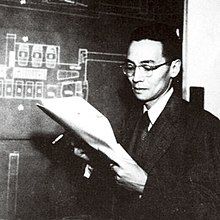
Joseph Rock is the third of the explorers here. As a botanist, he was preceded in Yunnan by at least two eminent botanical collectors, George Forrest, sent by the Royal Botanical Garden, Edinburgh, and
Heinrich von Handel-Mazzetti, sent by the Austrian Academy of Sciences.
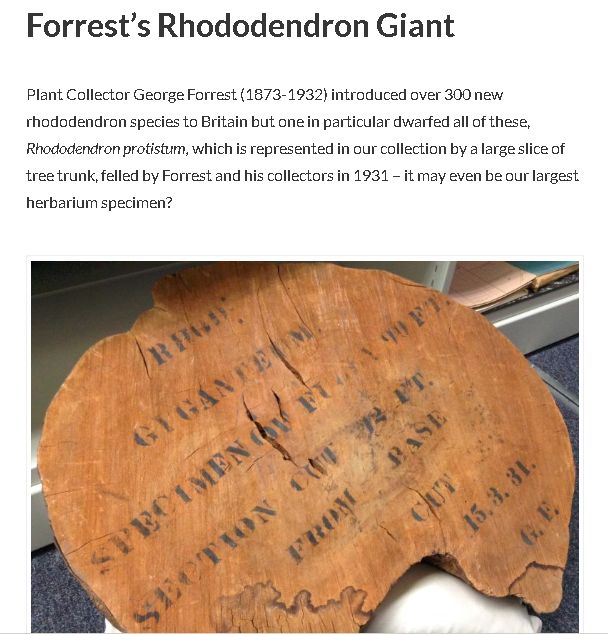 >
>
^ Forrest brought back famous specimen of rhododendron, genus in which Yunnan is particularly rich.
Rock's own journey to Yunnan was preceded by his journey to SE Asia in pursuit of the chaulmoogra tree, a journey paid for by the US Dept of Agriculture's Office of Foreign Seed and Plant Introduction, which wanted this tree as a treatment for leprosy. Behind this lies a compelling story.
As Wikipedia puts it: "Alice Augusta Ball [born 1892] was an African American chemist who developed an injectable herbal extract (ethyl hydnocarpate) that was the most effective treatment for leprosy during the early 20th century. She was the first woman and first African American to receive a master's degree from the University of Hawaii, and she was also the university's first female chemistry professor."
Although chaulmoogra oil had been used for leprosy since the 1300s, results were poor: its viscosity made topical application impossible and negated injection because it just created lumps under the skin which were not absorbed. Ingesting it caused the patient to vomit.
"At the young age of 23, Ball developed a technique that would make the oil injectable and absorbable by the body. Her technique involved isolating ester compounds from the oil and chemically modifying them, resulting in a substance that retained the oil's therapeutic properties and was absorbed by the body when injected." It was because of Ball's research that Rock was sent into the jungle in
SE Asia. But the tragedy is that Ball died at age 24, possibly from some substance in her laboratory, even possibly from chlorine gas she used while demonstrating how to use a gas mask -- the US was preparing to enter WW1.


5/ Three Types of Trip, and Trifles
The text mentions that when we landed in Jinghong, after the aerial inspection on our descent of the rubber plantations far and wide, which from the air look like a giant bristle mat,
"We landed in the sunny afternoon [and] exited under a sign which read 'Peculiar Chamnel.' "
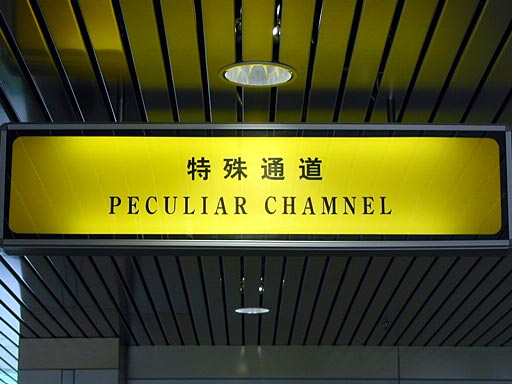

Hoopoe. The connections with Aristophanes and others are as follows: * Aristophanes (c. 446- c. 386 BC) -- his comedy, The Birds, features the king Tereus who has metamorphosed
into a hoopoe and is now king of the birds. * Napoleon -- the island in the south Atlantic to which he was exiled, Saint Helena, was once home to a now extinct species of hoopoe.
* The Pharoahs -- considered sacred in Ancient Egypt and considered "as a symbolic code to indicate the child was the heir and successor of his father." * The Torah -- considered "detestable" and
not kosher.
* Quran, Bible, and the multitudinous, complicated tales of Solomon and the Queen of Sheba

-- in which the hoopoe is part messenger, part spy. * Moses -- Islamic literature states that a hoopoe
enabled Moses and his followers to defeat Og in the battle that followed their crossing of the Red Sea. * Ovid -- his play, Metamorphoses provides the grisly circumstances under
which Tereus was transformed into a hoopoe. * Emperor Gaozong -- his mausoleum complex contains a painting of three women with a hoopoe.
* Alberich -- The book mentioned below in the notes to Chapter 8, Brave Genius by Sean B. Carroll, about two men who fought in the French Resistance during WW2 and later became Nobel Laureates,
alludes to Alberich. The occupation darkened even further when executing fifty or a hundred men in retaliation for each assassination of a German officer was not working to prevent
further assassinations -- darkened when Hitler on December 7, 1941 issued his "Night-and-Fog Decree," whereby, in addition to summary executions, resisters would "disappear in the 'night and fog' of German concentration
camps, without a trial, and without their families knowing their destinations or fate." The name of the decree was "an allusion to Richard Wagner's opera Das Rheingold", in which
Alberich makes himself invisible so as to torment his subjects."

6/ Great Wall
Although Graham Peck, after writing his great books, pretty much vanished into his print shop in Vermont for the rest of his life, known only to a handful of China specialists who treasured his writings, the vanishing is diminishing somewhat these days -- he is, for example, now proudly counted as a member of the Derby Hall of Fame in his hometown. Indeed, if you go to Google Images and put in "Graham Peck" (in quotes) the first image you see is of a young Graham with a suit and tie. For the Hall of Fame, see Fame . In addition, Two Kinds of Time was reprinted in 2009, and likely will be reprinted regularly, though it really deserves to be in the Library of America series.
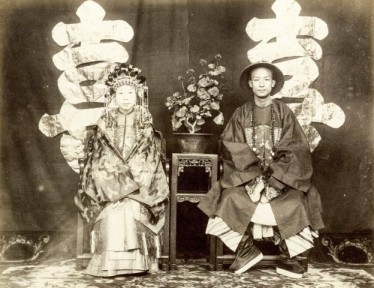 Daughter of Zeng Guofan (1811-1872)
Daughter of Zeng Guofan (1811-1872) Images 2 Click
Again, these are images from the immediate Green Lake area, with a couple of exceptions. The bridge is from Lijiang; the old building from Dali. The rice paddy is from the agricultural fields that surround the Old City of Dali. The Teabucks failed to prosper. The boy is a magician, practicing before he goes on stage as a streetcorner attraction for the mobile phone stores there. The traditional musicians from surrounding villages who gathered to play in the center of Green Lake, something mentioned in Theroux's book, have more or less been displaced by recorded music danced to by large groups of people.
7/ Eyes on China
Speaking of eyes, "Football for the blind" has not returned to Kunming since I orginally saw it, I am sorry to say. If it has, it has escaped my notice and that of my friends. Something so wonderful deserves to become an institution.
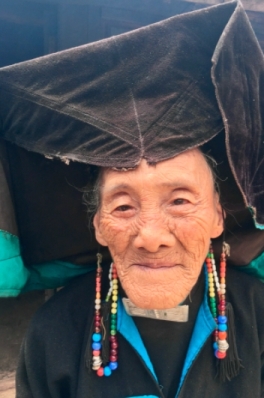 >
>
Random image: Naxi woman by Jeremy Liew.
Of course people think mainly of the handicap of blindness, but the blind are capable of wonderous things. There's an American, for example, Erik Weihenmayer, who has both climbed Mt. Everest and taken
his kayak down the entire 277 miles of the Grand Canyon (with his friend, blinded Navy Veteran, Lonnie Bedwell). He's written about this last, No Barriers (2017), a title he also uses for the organization he's founded.
8/ Two Warriors
Improbable as it may seem, while Agnes Smedley (from Colorado) was getting Zhu De to relate memories of his life to her up there in the caves of Yenan, there was actually a second American woman (from Utah), a little younger than Agnes, getting another revolutionary to relate his memories of his life which she also converted into a famous book. Only, Helen Foster Snow's revolutionary was Korean rather than Chinese, and he ultimately was (mistakenly) assassinated by the Chinese revolutionaries he had embraced as a means of ridding Korea of its Japanese overlords. He was Kim San, and the book which resulted from this collaboration is now being republished as Song of Arirang: The Story of a Korean Revolutionary in China by Kim San and Nym Wales (Helen Foster Snow), edited by George O. Totten III and Dongyoun Hwang, and with an introduction by Arif Dirlik. (2021, Kaya Press). A review of this book tells much of the story: E. Tammy Kim, "Korea’s Tireless Patriot and Revolutionary," New York Review of Books, December 17, 2020.
Chennault's "autobiography," Way of a Fighter (1949), was in fact written by Robert Hotz. Dan Ford writes: "The book was ghost-written by Robert Hotz in New York and transcribed
by Doreen Lonborg Reynolds in Taiwan; she told me (1986) that Chennault did not closely supervise the project." See Ford's
remarks. Jack Samson, Chennault's biographer, writes that Hotz was "a former newspaperman and Air Force officer who had served in China. In 1943 he had also written With
General Chennault: The Story of the Flying Tigers, with the help of ex-AVG pilots George Paxton, Parker Dupouy, and Robert Neale." It should be added that Hotz was a very good writer.
Back in America, Chennault divorced the wife he'd married in 1911 and with whom he'd had eight children and
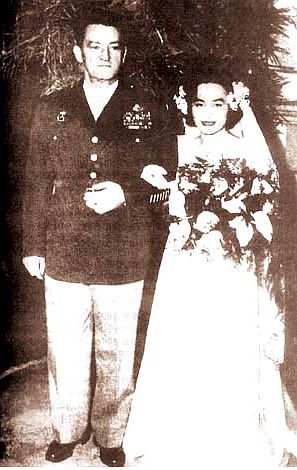 married Chen Xiangmei (Anna Chennault), a young reporter for the Central News Agency, with whom he had two more. Anna became famous after his death as one of
the chief lobbyists for CKS. She became famous, at least in DC circles. (Her husband died in 1958). Your correspodent here remembers attending a performance one evening at the Kennedy Center, when, as the audience was assembling, he and his wife heard applause down on the main floor. Peering over the upper balcony railing, they saw
two people taking their seats in the center section -- "That's Anna Chennault" a person standing and peering next to them said. Anna lived in the famous Watergate, right next door to the Kennedy Center. She lived to be 94, dying in 2018.
married Chen Xiangmei (Anna Chennault), a young reporter for the Central News Agency, with whom he had two more. Anna became famous after his death as one of
the chief lobbyists for CKS. She became famous, at least in DC circles. (Her husband died in 1958). Your correspodent here remembers attending a performance one evening at the Kennedy Center, when, as the audience was assembling, he and his wife heard applause down on the main floor. Peering over the upper balcony railing, they saw
two people taking their seats in the center section -- "That's Anna Chennault" a person standing and peering next to them said. Anna lived in the famous Watergate, right next door to the Kennedy Center. She lived to be 94, dying in 2018.
As mentioned, Way of a Fighter makes clear the inability of high command to adapt to advances in military technology. Chennault left the US Army's air force because his superiors were obtuse when it came to evaluating the potential of fighter planes. A marvelous book, Brave Genius, by Sean B. Carroll describes the same fault at this same time in the French high command, a fault which had in that case catastrophic consequences. Carroll is molecular biologist and geneticist of the first rank, but in this book he also shows himself to be a terrific war historian and biographer. The book focuses on the wartime experiences of two men who fought in the French Resistance, becoming close friends, each of whom later won the Nobel Prize: Jacques Monod, whose prize was for understanding how genes are switched on and off as cells grow, and Albert Camus, whose prize was for literature. The book begins by recounting in detail "The Fall" -- the events leading up to France's defeat. One of these events was rejecting the views of a young colonel who argued as early as 1935 that tanks changed the game and made France's reliance solely on its Maginot Line obsolete. Indeed, Germany routed the French army and allied divisions by massing tanks and penetrating the impenetrable Ardennes forests, overtopping the Maginot and undercutting its opponents arrayed on the Belgian plain. Charles de Gaulle, of course, did not resign, though after he fled to Britain the Vichy government stripped him of rank and initiated his court-martial at about the same time Chennault was forming the Flying Tigers.
9/ Clashes, Cars, Chengdu, City Ecological
Perhaps this note would be better placed next to the Transformations chapter, since it deals with a transformation which has taken place, though not just of Kunming, but of the whole province. When we came in 2002, Kunming had modern tech, though the DVD was just coming in. But no one would describe it as "cutting-edge" -- let alone the rest of the province. But a Dec. 1, 2020 article on cointelegraph.com is entitled: "Authorities shut off electricity to Bitcoin miners in China’s Yunnan province." Bitcoin. "According to Cambridge University’s Bitcoin Electricity Consumption Index, Yunnan was China’s fourth-largest region by mining hash rate, behind Xinjian, Sichuan and Inner Mongolia as of April 2020. Yunnan then represented 5.42% of global hash rate — ranking it above all countries except for China, the United States, Russia and Kazakhstan." And it turns out that "Baoshan [is] where China’s crypto mines are located." Baoshan is far from Kunming, north and west, and on the border with Myanmar.
Images 3 Click
The nanocapitalists are gone; they had been banished on previous occasions but always somehow came back. This time it looks like for good, though. The bottom half contains images from and around Dali. The little girl in the first row of the bottom half is a member of the Bai ethnic minority, at an annual festival.10/ Kinds of Time
Random connections? -- Two Pecks, Two Spences. The book mentioned above, Brave Genius, is about the French Resistance at this same time Graham Peck was in China and writing about the war there. Although it focuses on Jacques Monod and Albert Camus, later Nobel Laureates, it names many other individuals who fought in the Resistance, women as well as men. I was surprised to see one name in particular: Marcel Peck "chief of the Lyon region for Combat [one of the Resistance groups]." Alas, Marcel does not make it through 1943: although he "had escaped the Nazis three times previously, was also snatched in November and disappeared without a trace." For those familiar with Jonathan Spence, foremost China expert, an Englishman whose career has been at Yale, it is interesting to learn that one of the first B-17 aviators smuggled out of France after his plane was shot down was also named Spence: John Spence of Tennessee.
11/ Volatility
There is no particular place to hang this hat, but a random tossing has landed here. It is 1854, and Yung Wing has just graduated from Yale, the first Chinese student to graduate from
any North American university. He had been taught by missionaries in Macau and HK and gone to prep school in MA. Fast forward to 1871, back in China. Now a government
official, he convinces the government to fund the "Chinese Educational Mission", each year bringing 30 Chinese boys, ages 12 to 16, to New England to attend grammar school through
college. The ultimate goal is to bring technical expertise to China and speed up the process of modernization.
12-year-old Yan Phou Lee seized this opportunity.“A chance to see the world was just what I wanted.” One of the first things he saw, crossing America to get to New England, was the
train on which he was riding being held up by Jesse James. He eventually made it into Yale, but had to leave after one year when the Chinese government terminated the program because
of a fear that the boys were becoming Christians.
Back in China, Lee was sent to Tianjin Naval Academy, became a Presbyterian, and worked to save money for the trip back to the states -- which began on Xmas Day 1883. He needed
money, however, so worked giving lectures about China and writing stories for children, which he eventually published -- becoming "the first Asian American author to publish a book in
English." Back in college, he picked up where he had left off, won prizes, was elected to Phi Beta Kappa, and chosen as one of the commencement spearkers. His speech trashed the
the Chinese Exclusion Act prohibiting immigration from China. The local paper: his speech was "was a phenomenal affair. It was frequently interrupted by loud and long applause, which
seldom happens at that formal season. He gave his mind a very free delivery, and his was the Chinese side of the story." Marriage soon followed, as did two children. But so did a
widely publicized divorce. (Among other things, the bride's mother did not approve of her daughter's choice).
Ten years of wandering followed (try fortune-teller at the 1893 Chicago World’s Fair). He married again in 1897, and in 1904, he and his wife settled in northern NJ with their two sons.
"The second marriage lasted 30 years, but it was not necessarily a happy one." He was an editor at two small-town newspapers, ran a poultry business in Chinatown, and in
in the 1920s, served as managing editor of American Banker magazine. At 65, he returned to China, but Japan invaded China and in 1938 began bombing Canton. It is presumed he
died in these bombings.
(The full story can be found here.
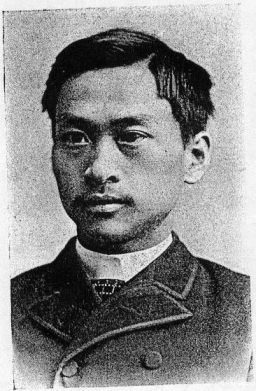
More directly connected to the events in this chapter is something that has just been published, something which supports the idea about the Sichuan earthquake described in chapter 9 and referenced again in this chapter, a quake which killed 80,000 people. This chapter probes an article published in the NYT almost a decade ago which is based on the publication of a contention by an academic scientist that the Sichuan quake was created by dam building -- specifically, by a huge reservoir created as part of that building. The new article I have just discovered in the WSJ (Jan 17, 2022) is Texas Earthquakes Prompt New Fracking Rules. The Permian Basin in West TX and adjacent NM is the center of US fracking, and probably the center of the world's fracking. This has gone on for a long time now, and has produced a lot of oil, but will it produce an earthquake?
Images 4 Click
The top half contains images from the festival celebrating the opening of Midu's renovated park with its new library, museum and cultural center, an event described in chapter 15. The bottom half is an extremely variegated selection. The painting, now gone, is of Wen Yiduo. The man in uniform is Long Yun, long Yunnan's warlord.13/ Nanocapitalism
Among the many things in this chapter is what I call the Male Bonding Baijiu Dinner. An American, Derek Sandhaus, who lives in Washington, DC "with wife and dog", where I
lived "with wife and dog" while writing this book, has a much deeper interest in baijiu than I. He has written a book,
Drunk in China, in which a friend tells him that "it takes 300 shots to learn to love the liquor". He accepts the challenge. And, indeed, his epiphany comes after only about 70. This from
a man who originally described baijiu as something that "smelled as if someone had wrung a bag of soiled gym shorts into a bucket of fish sauce, stirred in an equal measuer of Drano,
rotten fruit, and blue cheese, and left it to marinate a few days."
His book tells us that of the world's entire consumption of alcohol (what a concept!), baijiu accounts for 40%.
It also tells us that Nixon brought some back and in the White House showed his daughter a popular Chinese party trick: setting a saucer filled with it on fire. Cracked the saucer,
singed the table. Secret Service had to extinguish the party trick. Now we know what Secret Services are for. And as for Nixon playing with fire . . .
But times change, and red wine is on the increase in the Middle Kingdom of today.
More from the author can be found here: Sandhaus. The above link, however, is the best link to the actual book.

* the one we brought to China with us, the immortal Shanghai, a female, smallish (for this breed) Malamute. See chaps 1 & 5, and this:
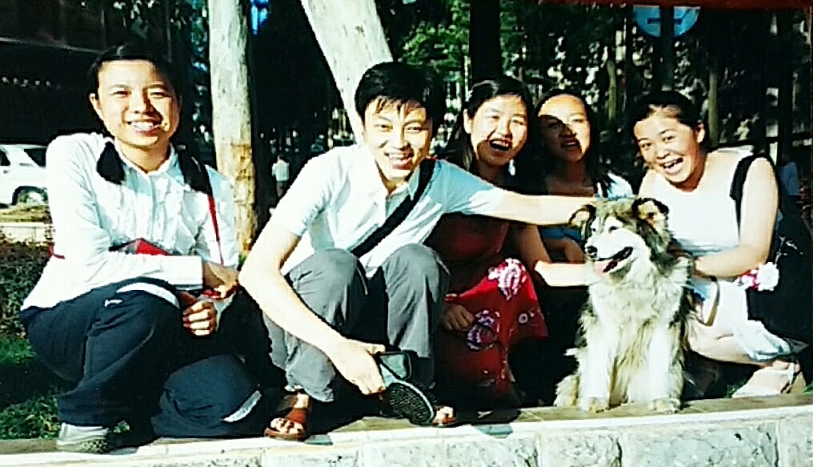
14/ Joe Alsop
This is from the chapter: "He does say that during this time he took a vacation trip to Sian (Xian), where many years later the terra cotta soldiers were discovered. There he ends up buying antiques at bargain prices because the usual markets in Japan were, of course, cut off to the dealers. The strange thing is that I have seen some of those antiques, in his home in Georgetown. Nabob that he was, Joe at one point volunteered to include his house on the annual house tour offered by his local church as a fundraising vehicle. This was the house at 2720 Dumbarton Street, a couple of blocks from where Julia Child had lived when she came back from Kunming. He built it in a painted concrete-block modern style which so offended the folks of the Georgetown Citizens Association that they managed to get a law passed forbidding anything more like that. I had a neighbor at the time who didn’t like Joe’s house much either; she said the old-timers referred to it as 'the Dumbarton Street comfort station.' I bought a ticket and took the tour. When I got to Joe’s house I was taken with the oriental antiques used as decoration, totally unaware that he had spent any time in China (I had to come to Kunming and start reading about it to discover that). The other item I especially noted was a solitary photograph on a wall in a corner where his phone was: Lindbergh in his flying jacket, standing by the Spirit of Saint Louis. I seem to remember that the photograph bore an inscription from Lucky Lindy, but there is no account of Lindbergh in the memoirs, so perhaps this was a memorial to his first reportorial assignment -- the kidnapping and the trial, 'The Crime of the Century.'”
15/ Bo
Here are the Eight Elders (Eight Immortals) of the CCP. Bo Xilai's father is second from the left, bottom row.

L to R, top: Deng Xiaoping; Chen Yun; Li Xianian; Peng Zhen
L to R bottom: Yang Shangkun; Bo Yibo; Wang Zhen; Song Renqiong
From chapter 15: "Bo Yibo, had been an early ally of Mao and indeed was one of the Eight Elders of the Communist Party, though, like almost everyone else from those first years, he
had later been purged at the outset of the Cultural Revolution. He spent fifteen years in prison and was tortured by the Red Guard in 1967. His wife was beaten to death, his children
rusticated or imprisoned or both. But Bo Yibo was rehabilitated when Deng Xiaoping took over; he was restored to high positions."
Images 5 Click
The top two rows contain two images from Kunming, the street overpass and the blind football. The bottom two rows contain images from Jianshui, directly to Kunming's south and a little over a half day's drive. The remaining images are from a journey outside of Midu and another to see the monkeys. The child with the sidewalk calligraphy is in Dali.17/ More Bo
Bo is now a movie star, sort of. The third story in this film is based on his troubles: "The Laundromat is a 2019 American biographical comedy-drama film directed by Steven Soderbergh with a screenplay by Scott Z. Burns. It stars Meryl Streep, Gary Oldman, Antonio Banderas, Jeffrey Wright, David Schwimmer, Matthias Schoenaerts, James Cromwell, and Sharon Stone. It is based on the book Secrecy World, about the Panama Papers scandal, by Pulitzer Prize-winning author Jake Bernstein." Bo is played by Jesse Wang, his wife by Rosalind Chao.
18/ Belden and the Revolution
Despite his greatness as a writer, and his preeminence as war correpondent, references anywhere to Jack Belden are difficult to find. I thus was delighted to see his name at least mentioned in a chapter by Lois Wheeler Snow, "Let the Devil Take the Hindmost", in My First Trip to China: Scholars, Diplomats and Journalists Reflect on Their First Encounters with China, edited by Kin-ming Liu, East Slope Publishing Limited (2012). Lois, daughter of the mayor of Stockton, CA, an actress pursuing a career in NYC, one who ended up as a regular in the soap opera "The Guiding Light", married Edgar Snow, friend of Mao and author of the famous Red Star Over China. Lois writes: "Through Ed, I developed close relationships with his friends and colleagues. Agnes Smedley showed me how to cook “oriental pilaf,” something she didn’t learn in Yan’an; Ed and Jack Belden speculated about events in China, past and present, over frequent games of chess in our home. I became friends with Mariann and Edmund Clubb and Caroline and John Stewart Service. Owen Lattimore fascinated me with his tales about Inner Mongolia." Not much, but I will take what I can get.
Images 6 Click
With the exception of the historical images, these images are all from the Green Lake area. Another exception is the image of the girls in green, which is from Midu.19/ Ceremony, Ice, Mangoes, Monkeys
Additional postings/Notifications
General Tso's Chicken is referenced both here and on the home page. Although he had nothing to do with the dish now named after him, General Tso was not only a real person, but an important military figure in the late Qing dynasty. His name is today transliterated as Zou Zongtang (1812-1885), and his military achievements center on crushing the Taiping Rebellion (1850-1864). This rebellion was led by Hong Xiuquan (洪秀全), third and youngest son of a Hakka family. In 1843, Hong failed the imperial examinations for the fourth time and soon after took up with Christians in their never ending mission to convert the heathen Chinese. Speaking with new people, reading the new materials, he managed to convince himself that he was the brother of Jesus. Convinced not just himself, but many thousands of others willing to take up arms on behalf of this new movement. Hong, about whom a plethora of books have been written, proved to be far better at political and military uprisings than at examinations. Zuo became an advisor to Zeng Guofan, a leading commander. Ten years later, in 1860, Zeng put him in charge of 5,000 volunteers, the Xiang Army. By September, he had driven the Taiping rebels out of Hunan and Guangxi provinces, into Shaoxing on the coast of Zhejiang province, where he also routed them. His forces pushed south into the provinces where the rebellion had begun, Fujian and Guangdong. Hong died on June 1, 1864, possibly from poison, possibly from eating weeds (Chinese medicine). His teenage son became ruler but was soon defeated by Zeng and Zuo, bringing an end to the rebellion in which perhaps 20 to 30 million people died, most from famine and plague. (Three other major rebellions were underway in roughly this same period: Nian Rebellion, 1853-68, Panthay Rebellion, 1855-73, and Dungan revolt, 1862-77). Here is a wonderful portrait and a no less wonderful picture of the general after whom the famous chicken dish is named:
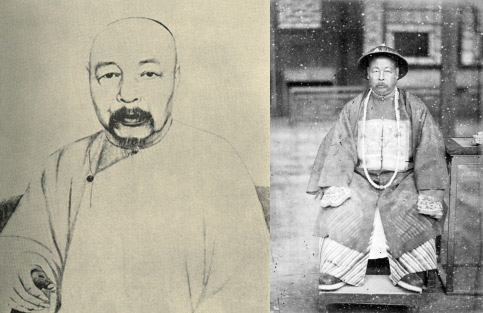
And now something TOTALLY ADDITIONAL: The author is firmly convinced of the health benefits that regular hiking -- and running -- offer. When in China he runs around Green Lake. Here's an article that confirms that, and, indeed, confirms that it helps with: Slows aging: "As we age, two forms of exercise are the most important to focus on: [a] aerobic exercise, or cardio, which gets your heart pumping and sweat flowing, and [b] strength training, which helps keep aging muscles from dwindling over time.
And most of the time, they don't require any fancy equipment or expensive classes."
Bonus image pages
1. One morning round GL. 2. Food. 3. Mekong & Baoshan. 4. Shaxi & Xiaoshuijing. 5. Zhu De & Flying Tigers. 6. GL misc. 7. Food2. 8. Lijiang. 9. Agriculture. 10. Erhai cleanse. 11. Dali town. 12. Signs. 13. Teenies 14. Animals 15. Masks 16. Misc. 17. Kids 18. Kids2 20. China (Except for the first, these are only available in the ebook).
Books by the author's friends.
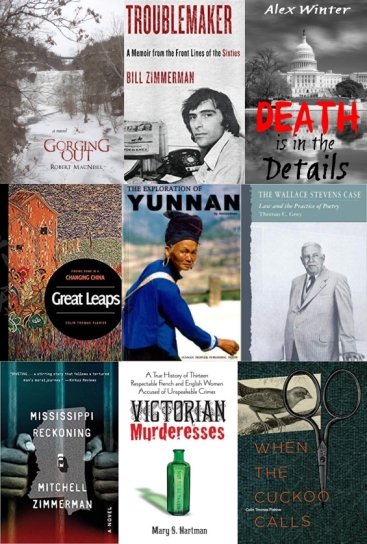
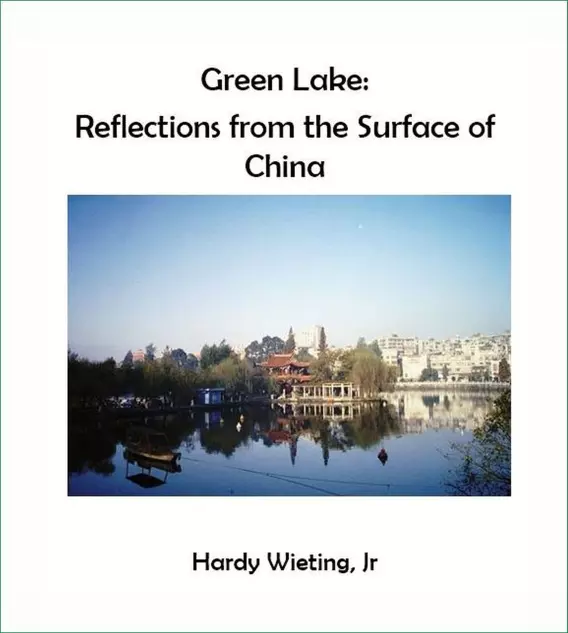
Table of Contents
Front matter
Preface
Prologue
1 / Around the Lake
2 / Through Chinese Eyes
3 / Transformations
Images 1
4 / Three Explorers
5 / Three Types of Trip, and Trifles
6 / Great Wall
Images 2
7 / Eyes on China
8 / Two Warriors
9 / Clashes, Cars, Chengdu, City Ecological
Images 3
10 / Kinds of Time
11 / Volatility
12 / Teddy
Images 4
13 / Nanocapitalism
14 / Joe Alsop
15 / Bo
Images 5
16 / JPD & Sledge
17 / More Bo
18 / Belden and the Revolution
Images 6
19 / Ceremony, Ice, Mangoes, Monkeys
Addendum
Additional postings/Notifications
Random Footnotes
Home page

Welcome to a journey, riding webbook or ebook. We alternate between roughly chronological "feet on soil" chapters and "nose in books" chapters. The introductory web posting
of the first two chapters is in full. Click Additional for other postings. The complete ebook, sans ads of course, is available now for purchase:
Click here
